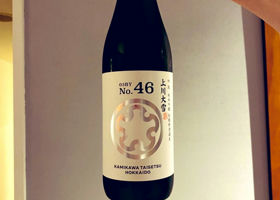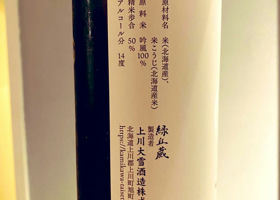

kittasann
Limited edition of 350 bottles of junmai ginjo nama-zake! When I was in Hokkaido the other day, I stopped by the brewery and saw that there were only two bottles left, so I bought it without hesitation.
I moved it from the refrigerator to the freezer, waited a little while, and served it well chilled.
The aroma was subdued, and the ginjo aroma was easy to drink, as is often the case with balanced nama-shu.
When you put it in your mouth, you can taste the sweetness and richness, and when it starts to fade away, you think, "Ah, this is a dry sake. Dry sake is easy to drink and goes down smoothly.
As you try to swallow it with that thought in mind, the acidity starts to kick in. It is true that if you classify it as a dry sake, it is a dry sake. However, the aftertaste is not strong but "sweet and sour" due to the acidity and a little residual sweetness. But the aftertaste is very sharp. It is dry after all.
With sweet sake, there are sometimes sweet and sour flavors, but this is the first time I've had this with a dry sake. And as you continue drinking and the temperature of the sake rises, you can also taste the sourness from the beginning.
According to my research, this sake is brewed with white malted rice used in shochu making, and the sourness is due to its citric acidity.
Dry sake with a sour taste is also delicious and different from other sake. It's a pity that it is only available in limited quantities.
Japanese>English